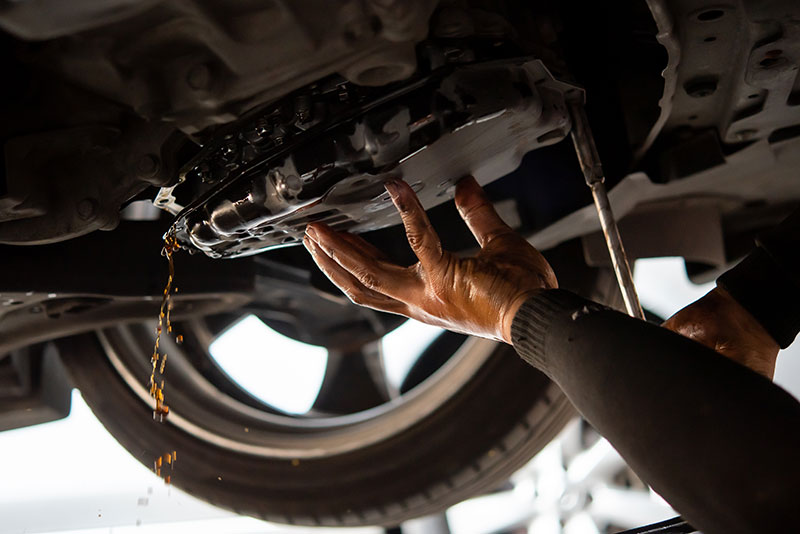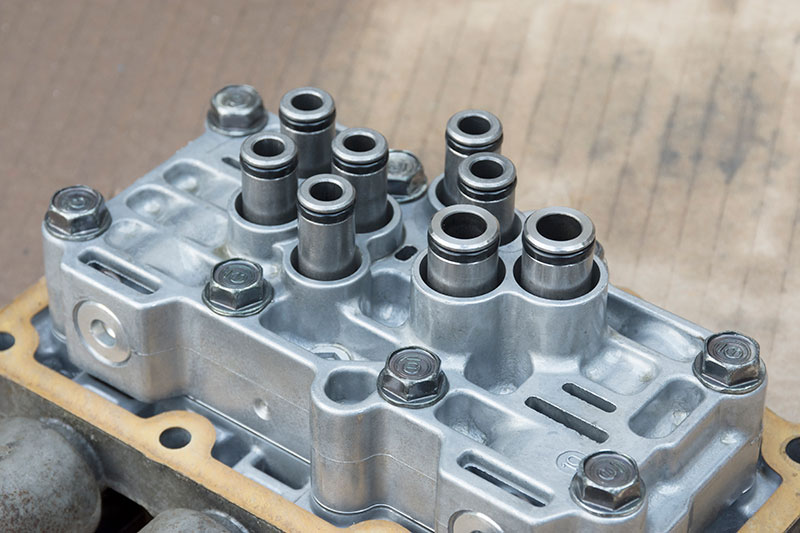
Transmission fluid is an essential part of keeping your vehicle running properly. It is tasked with making the gears shift more seamlessly as it lubricates bearings and other moving parts throughout the unit.
For the most part, as long as the fluid is routinely changed, it should keep everything running smoothly. But what happens if it’s not? Do you know what transmission fluid should look like?
How to Check Your Transmission Fluid
You don’t have to know much about your transmission, but it is always a good idea to know how to check your transmission fluid.
Why? Because knowing your fluid levels and color are crucial in maintaining your vehicle. And it can alert you that something is wrong before it gets worse.
Although each automobile varies slightly, below is a general guide on how to check your transmission fluid.
- When you are checking fluid levels, you want to make sure your vehicle is on a level surface.
- Always check the transmission fluid when the car is warm. So, turn it on, leave it in park, and let it warm up.
- Look for the dipstick for your transmission. This is not the one designated for your oil - though you may find the two near each other.
- Pull out the dipstick and wipe it clean with a dry, clean rag and then place it back in. Remove it again and look where the level is. There should be indicators that say, “full” or “low.”
If your fluid is low, it needs to be addressed right away. You will want to pay attention to the color, too. Of course, you could always swing by your local transmission shop and have them take a look at your transmission fluid to ensure that all is well.
What Healthy Transmission Fluid Looks Like
Healthy transmission fluid when it is added is going to look bright red. It is safe to assume that it is new - or like new - when it is this color. And, your transmission should be running well.
As time passes, the fluid will begin to turn a bit darker red. While it is still ok, you don’t want it to get any darker or turn brown. This is the time you should be contacting your local transmission experts to have your fluid changed.
What Transmission Should Not Look Like
If you decide to check your transmission fluid on your own, it is imperative that you know what it should not look like. If you pull out that dipstick and you see any of the below, it is time to reach out to your trusted transmission specialist.
- Brown. If your transmission fluid is brown, this means that oxidation has begun. You will want to have your transmission serviced.
- Dark Brown/Black. As the transmission fluid gets darker it is a sign that it has fully oxidized and is contaminated. This means it is likely causing damage inside your transmission. Immediate attention is required.
- Pink fluid or a foam-like fluid. If you see a pink fluid or foam-like fluid when checking on your transmission, this is a sign that it may have moisture in it. This could seriously put the health of your transmission at risk. Immediate attention is required.
Having your transmission cared for routinely is the best way to avoid any of these situations.
Need Healthy Transmission Fluid?
If your transmission fluid is the wrong color or if your transmission itself is showing signs that it may be ailing, then it is time to reach out to the pros at Circle D Transmission.
We have been serving the transmission needs of residents throughout the greater Houston area since 1976 - and we are here for you.
Contact us today at (713) 895-7019. Or, schedule an appointment online.




